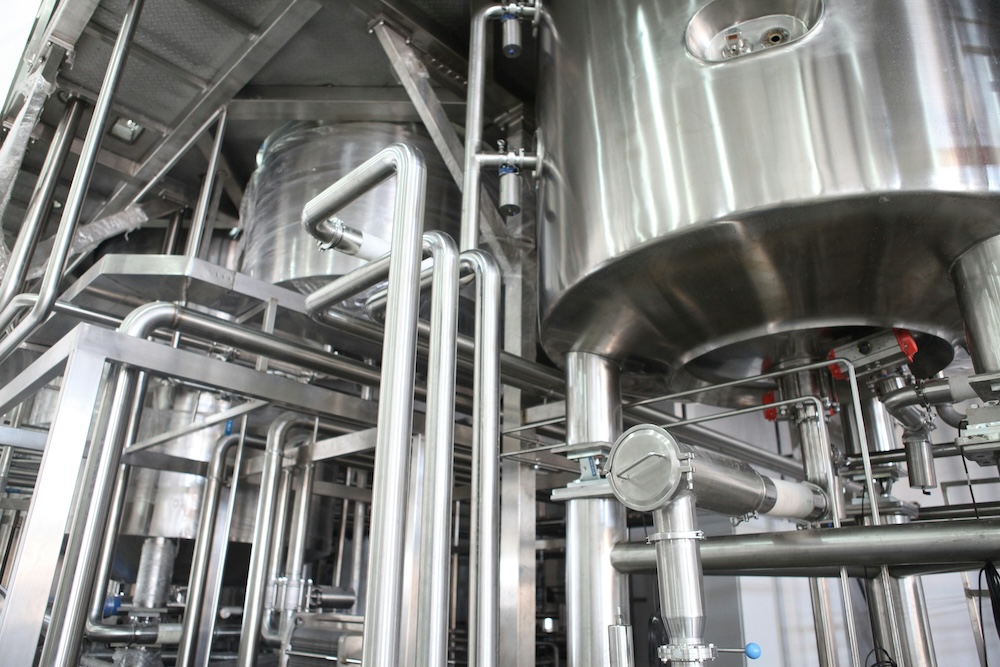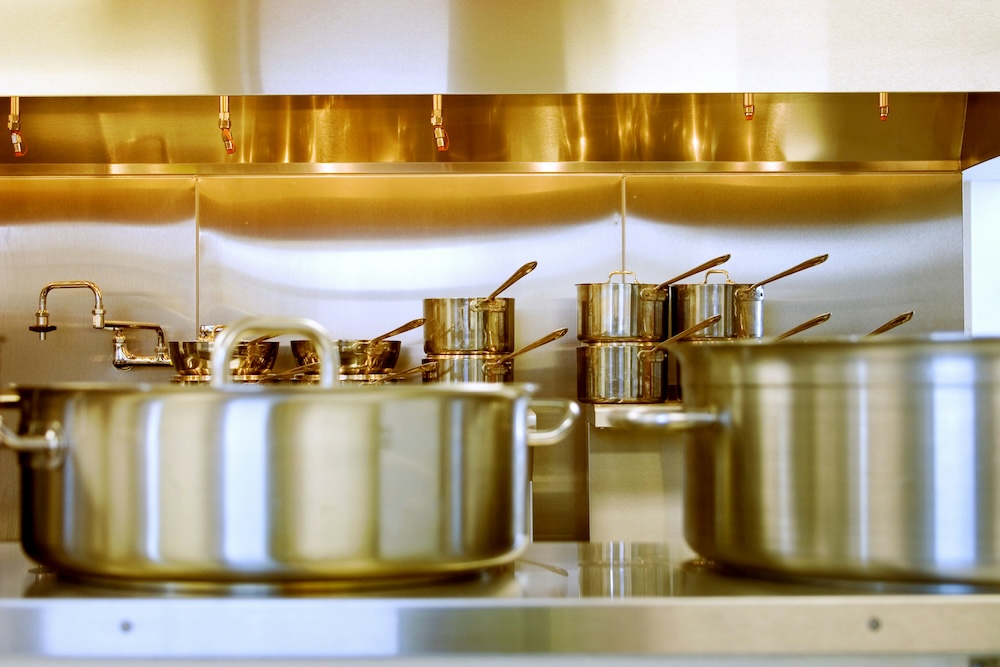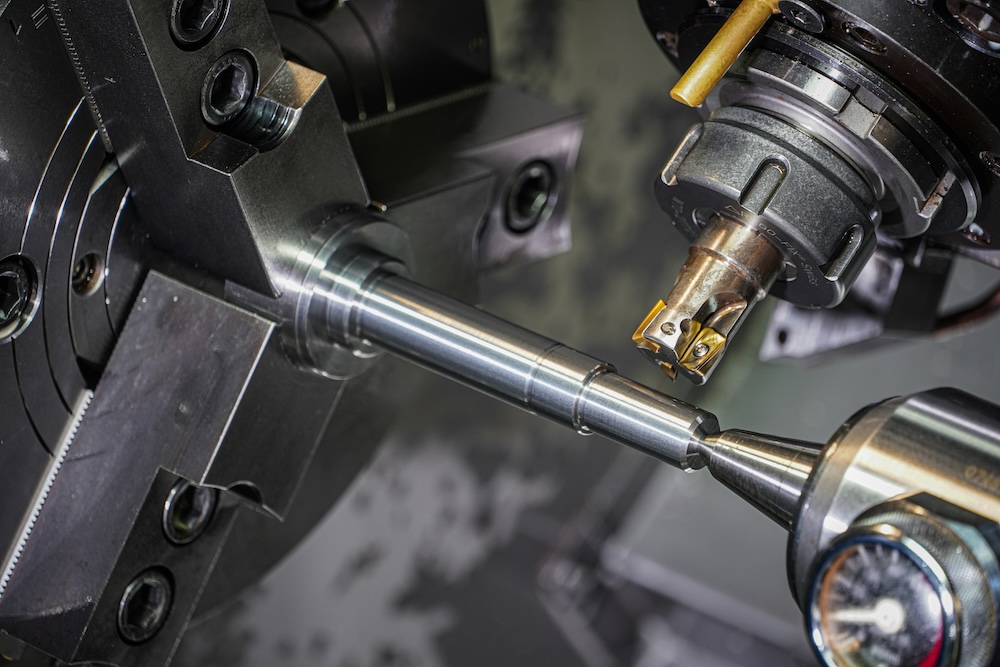Precision and speed are key when it comes to custom-made parts and prototypes. That’s why CNC machining has become a staple in the manufacturing industry since it first appeared in 1952.
With its ability to craft complex shapes in repeatable batches, CNC machining is a game changer for various industries seeking enhanced productivity and efficiency, especially when paired with durable materials like stainless steel.
Stainless steel is high in tensile strength, corrosion resistant, and a brilliant option for various applications. When used alongside CNC machining, it creates an assortment of components that meet manufacturer requirements and industry standards.
So, let’s examine stainless steel, its relationship with CNC machining, and its benefits.

An exploration of stainless steel
Stainless steel is a fantastic material. As an alloy of chromium, iron, carbon and sometimes other materials, it offers a range of benefits, from excellent durability to corrosion resistance. As a result, it has become an industry favourite for creating a wide variety of components, custom parts and prototypes.
When examining stainless steel in greater detail, it’s essential to consider its suitable applications and industries, the types of stainless steel available, and how its surface can be finished. All of these contribute to the components it can create.
Applications
Stainless steel is commonly used to craft medical equipment, automotive components and aerospace parts. Its sanitary qualities and corrosion resistance make it a top contender for marine applications and food and beverage industries. This is especially the case with the range of types and grades available.
While it might cost more than other materials, stainless steel is often a more cost-effective option. It offers low maintenance and long lifespans, making it an excellent choice for parts required in harsh environments and high-strength applications.
What are the types of stainless steel?
Stainless steel is an alloy, meaning it’s composed of different materials. These often include iron, chromium and nickel, which give stainless steel desirable properties for various applications and projects. These include fantastic corrosion resistance and strength, which are ideal for manufacturing parts needed in harsh environments.
Plenty of material options exist for stainless steel machining and turned parts. There are over 150 grades available, each of which is split into different series, including 200, 300 and 400.
Types of stainless steel for CNC machining include:
- Austenitic: The most common type of stainless steel is austenitic. It is solid and durable, resistant to heat and corrosion, and best suited to the industrial, automotive, medical, and aerospace sectors. Popular austenitic stainless steels include 304 and 316, which are suitable for various applications, including kitchen and food-grade equipment, valves and pumps, and chemical containers.
- Martensitic: Martensitic stainless steel has less chromium than austenitic stainless steel. This results in slightly reduced corrosion resistance but still presents excellent strength and durability. 410 stainless steel is a popular martensitic stainless steel, often used for knife blades, scissors and other kinds of cutlery and kitchen utensils.
- Ferritic: Ferritic grades of stainless steel, like 430, have a range of properties, including good durability and magnetic qualities. This type of steel tends to have more moderate ductility and resistance to corrosion than others but a higher resistance to stress-corrosion cracking. Ferritic stainless steels are easy to clean and are used in applications that favour advanced hygiene standards in the automobile industry, construction, and household equipment.
- Duplex: Duplex stainless steel is a combination of austenitic and ferritic qualities. It is stronger and more corrosion-resistant than ferritic and austenitic stainless steels alone, and it also has resistance to stress-corrosion cracking and magnetic properties. Duplex stainless steel also includes grades like 2205, perfect for processing equipment, high-chloride and marine environments, and gas and oil exploration parts.
- Precipitation-Hardening: Often referred to as PH stainless steels, precipitation-hardening stainless steels like 17-4 PH steel are subject to an age-hardening process following alloy production. They typically include added substances like copper, titanium, aluminium, and phosphorus, and they can present even greater strength than their austenitic counterparts — as much as three to four times more. For this reason, PH stainless steels are used for surgical instruments, hand tools and more.
Surface finishes
While components can be left machined to make parts look sleeker and more professional, stainless steel can be finished in various ways. Polishing, for example, can provide a range of smooth, shiny and reflective finishes.
Another typical finish for stainless steel parts—especially for marine applications—is achieved through blasting and pickling. The parts have a matte surface after being mechanically cleaned via bead blasting, chemically cleaned, and usually dipped in a passivation tank. This process disguises imperfections and flaws, providing a modern, industrial appearance.
Stainless steel can also be powder-coated for additional resistance to wear and corrosion. This strengthens its surface and protects against various chemicals, keeping parts intact for longer.
The perfect pair
Like aluminium, copper and plastic, stainless steel is one of several materials used to manufacture various components. Its desirable properties, including its durability, tensile strength and corrosion resistance, make it a favourite across several industries and applications, especially when paired with the many advantages of CNC machining.
CNC machining is a fantastic way of creating precise parts to tight tolerances through a process called subtractive manufacturing. After being programmed with specific G-code and instructions, the CNC machine can easily and quickly cut away at the workpiece to create the chosen design. In this case, that workpiece would be stainless steel. This allows for high precision and speed, design repetition with consistency between batches, minimal human error, reduced physical labour, and increased production.
The most common stainless steel CNC cutting machines include stainless steel milling machines and turning machines.

Is stainless steel hard to machine?
Traditionally, steel machining has been tricky, especially for heavy-duty applications. However, this doesn’t mean it can’t present a range of benefits when handled correctly. Today, plenty of CNC stainless steel parts offer good machinability and can be easily shaped.
If you’re looking for the easiest stainless steel to machine, you’ll probably want ferritic stainless steel. This includes the 400 series.
The benefits of stainless steel CNC machining
The most apparent benefit of stainless steel parts is their resistance to corrosion and wear. Due to stainless steel’s composition, most materials and grades produce components suitable for indoor and outdoor applications, including corrosive environments and food-grade equipment. They also provide sleek aesthetics, easy cleaning, and cryogenic resistance.
Cryogenic resistance refers to stainless steel’s ability to remain stable at various temperatures. This is common in austenitic stainless steels, which have high toughness even in sub-zero temperatures. Not all types of stainless steel share this characteristic, however, so this should be kept in mind.
Compared to other materials, stainless steel has better tensile strength than mild steel, brass, and aluminium alloys. As a result, stainless steel is better suited to parts subject to frequent bending and rolling.
Challenges of stainless steel CNC machining
Not all stainless steels are the same. This may sound obvious, but it can cause significant challenges in CNC machining stainless steel.
Different types of stainless steel offer distinct advantages and properties, catering to specific uses. We discussed corrosion and cryogenic resistance previously. Stainless steels with less corrosion resistance will not be as long-lasting in corrosive environments, and types with cryogenic resistance are suitable for temperatures below zero, where others can’t tolerate them.
Using the wrong type of stainless steel can cause production delays, additional costs for manufacturing and materials, and other issues. Therefore, it’s best to ensure the steel suits the application and manufacturing processes.
Ways to avoid challenges in stainless steel CNC machining:
- Speed and Feed Rate: Several factors can contribute to workpiece deformation and distortion. In order to prevent this, manufacturers should ensure that speeds and feeds for stainless steel are selected appropriately.
- Generated Heat: Heat is a common contributor to poor stainless steel CNC parts, especially since stainless steel has a lower thermal conductivity. Heat should be managed by using moderate cutting speeds and suitable coolants or even taking breaks during the machining process to let the machine cool down.
- Chip Formation: Chips are a common flaw in machined stainless steel parts. Pecking and chip-breaking cycles can prevent many chips from forming. Likewise, checking and replacing worn cutting tools can help control this issue.
- Cutting Tools: Choosing the correct cutting tools is vital for CNC stainless steel machining. Cutting speeds and machine capability can dictate this. Carbide tools are appropriate if the machine can offer high speeds and feeds. If not, HSS tools are a better choice.
What’s the verdict on stainless steel CNC machining?
Stainless steel, an alloy of chromium, carbon and iron, is a material you likely see and use daily — whether you work with it or use it to eat your food. That’s for good reason.
It’s an incredibly sturdy compound, typically offering high durability and resistance to corrosion and sub-zero temperatures. This makes it appealing to industries like healthcare and automotive, though it’s crucial to work with the right type, whether it’s austenitic, martensitic, ferritic, duplex or PH stainless steel.
Beyond the type you choose, manufacturers should consider how stainless steel looks and functions. Consider whether a polished, matte or powder-coated look best suits how it will be used.
It’s also worth remembering that stainless steel can be tricky to work with due to its relatively low machinability. If you plan to use it in CNC machining, be sure to research the tools you use and how to manage heat degradation and chipping. Likewise, if you’re looking for precision CNC machining services, we’re happy to help.

Supporting UK businesses
Are you looking for support with your project? Sheldon Precision is here to help. With a full CNC manufacturing facility, we provide a premium service to exact customer specifications.
Contact us today to find out how we can support you.

